Microsoft 365 (M365) is a powerful tool for businesses of all sizes. It provides a comprehensive suite of applications and services that can help organizations improve productivity, collaboration, and security. However, to get the most out of M365, it is essential to have a strategy for managing metadata.
Metadata, in its simplest form, is data about data. It is information that describes the characteristics of a file, such as its title, author, and creation date. By leveraging the power of metadata in Microsoft Purview, you gain a comprehensive understanding of your data landscape, streamline data management processes, enhance data security and compliance, and drive data-driven insights that fuel innovation and growth. Here’s why metadata is essential in fully optimizing the capabilities of Microsoft Purview:
Enhanced Data Discovery and Search: Metadata helps you quickly discover and locate specific data assets within your organization. By tagging files with relevant metadata, such as titles, descriptions, and keywords, you can quickly search and retrieve the information you need, improving productivity and decision-making.
Improved Data Organization and Management: Metadata allows you to organize and structure your data systematically and meaningfully. You can categorize data into logical groups, apply labels, and define relationships between different data items, simplifying data management tasks like migration, backup, and archival.
Increased Data Security and Compliance: Metadata plays a vital role in ensuring the security and compliance of your data. By utilizing metadata, you can apply appropriate access controls, track data usage, and monitor suspicious activities. This helps protect sensitive data from unauthorized access and ensures compliance with regulatory and legal requirements.
Enhanced Data Insights and Analytics: Metadata provides valuable insights into your data, enabling you to make informed decisions and drive business value. You can identify data relationships, uncover hidden insights, and derive meaningful analytics by analyzing metadata patterns and trends. A sound metadata strategy will empower you to optimize data-driven decision-making and gain a competitive advantage.
Simplified Data Integration and Interoperability: Metadata facilitates data integration from diverse sources and systems. You can ensure consistent data definitions and enable seamless data exchange by mapping and aligning metadata across different data sets.
Improved Data Governance and Stewardship: Metadata is fundamental to effective data governance and stewardship. It provides a common understanding of the organization’s data assets, ownership, and usage. With well-defined metadata, you can establish data governance policies, assign data ownership, and enforce data quality standards, ensuring the trustworthiness and reliability of your data.
Three Major Elements in a Metadata Strategy for Managing M365 Content
So, how do you get started in creating an effective metadata strategy? Here are a few tips:
1. Understand the different types of metadata and which metadata is most important for meeting your organization’s needs.
- Descriptive metadata describes a resource’s basic attributes, such as its title, author, subject, and keywords. This type of metadata is often used to help users find and identify resources.
- Structural metadata describes a resource’s structure and organization, such as its file format, size, and relationships to other resources. Organizations use structural metadata to manage and organize resources.
- Administrative metadata describes the administrative information about a resource, such as its creation date, modification date, and ownership. Organizations use administrative metadata to track and manage the lifecycle of resources.
2. Establish a standardized format and structure for your metadata — a metadata schema — to ensure consistency and ease of use.
Organizations use a metadata schema to define the specific metadata elements, their definitions, and allowable values. Organizations can include several types of metadata schema in building their framework:
Dublin Core: The Dublin Core metadata schema describes a resource’s basic properties. It includes elements such as title, author, subject, and date.
- MARC: MARC (Machine-Readable Cataloging) is a metadata schema for describing library resources’ contents. It is more complex than Dublin Core and includes elements such as classification numbers, subject headings, and notes.
- MODS: MODS (Metadata Object Description Schema) is a metadata schema describing the content and structure of digital resources. It is like MARC but is more flexible and can be used to describe a broader range of resources.
- XMP: XMP (Extensible Metadata Platform) is a metadata schema describing the properties of digital images. It is based on the RDF (Resource Description Framework) and describes various image properties, such as resolution, color space, and copyright information.
- RDF: RDF (Resource Description Framework) is a general-purpose metadata schema based on the concept of triples, which are statements about the properties of a resource.
3. Define a consistent set of policies and procedures for the creation, maintenance, and use of metadata.
By considering the following issues, organizations can develop a set of metadata policies and procedures tailored to their specific needs:
- The purpose of the metadata. What do you want to use the metadata for? Will it be used for search, records management, compliance, or another purpose? The purpose of the metadata is to help you determine what elements are essential and how the metadata should be structured.
- The type of content being managed. What kind of content will you be using the metadata to manage? Is it documents, images, videos, or something else? The type of content will help you determine what metadata elements are relevant and how the metadata should be structured.
- The audience for the metadata. Who will be using the metadata? Will employees, customers, or both use it? The audience will help you determine the level of detail that is needed and how the metadata should be presented.
- The resources available for metadata management. How much time and money do you have to invest in metadata management? The resources available will help you determine how comprehensive your metadata strategy can be and what tools you need to implement it.
DocPoint‘s vendor partners offer everything you need to leverage metadata within M365 for governance and process automation fully. From workflow and forms to automation and migrations, DocPoint has partnered with some of the best in the industry to provide you with the tools and resources you need to manage your business more efficiently and effectively. Find out more HERE in the DocPoint partner portal – https://www.docpointsolutions.com/about/partners/.
[Written by a human with the assistance of Google Bard.]
Contact our industry experts today to start your digital transformation process. Call us at 301-490-7725 or send an email to info@docpointsolutions.com

